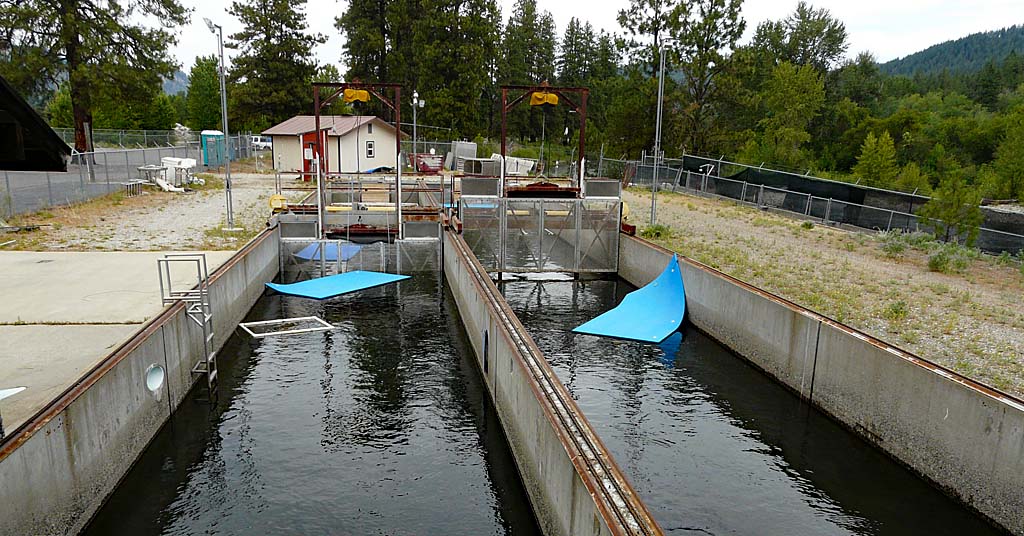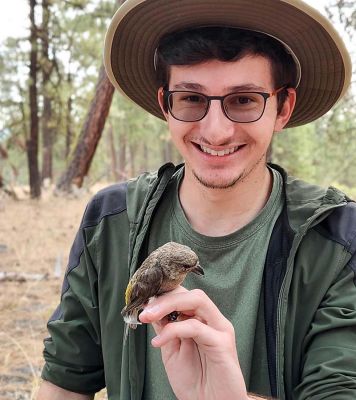Oregon State archaeologists uncover oldest known projectile points in the Americas
Published 10:00 am Wednesday, January 4, 2023

- An excavator records artifacts at an Oregon State University archaeological dig at Cooper’s Ferry along the Salmon River in Idaho. OSU on Dec. 23, 2022, reported finding the oldest projectile points in North America at the site.
CORVALLIS — Oregon State University archaeologists have uncovered projectile points in Idaho that are thousands of years older than any previously found in the Americas, helping to fill in the history of how early humans crafted and used stone weapons.
OSU on Dec. 23 announced the 13 full and fragmentary projectile points, razor sharp and ranging from about half an inch to 2 inches long, are from roughly 15,700 years ago, according to carbon-14 dating. That’s about 3,000 years older than the Clovis fluted points found throughout North America, and 2,300 years older than the points previously found at the same Cooper’s Ferry site along the Salmon River in Idaho.
Trending
OSU published the findings in the journal Science Advances.
“From a scientific point of view, these discoveries add very important details about what the archaeological record of the earliest peoples of the Americas looks like,” said Loren Davis, an anthropology professor at OSU and head of the group that found the points. “It’s one thing to say, ‘We think that people were here in the Americas 16,000 years ago;’ it’s another thing to measure it by finding well-made artifacts they left behind.”
Previously, Davis and other researchers working the site found simple flakes and pieces of bone that indicated human presence about 16,000 years ago. But the discovery of projectile points reveals new insights into the way the first Americans expressed complex thoughts through technology at that time, Davis said.
The Salmon River site is on traditional Nez Perce land, according to OSU, known to the tribe as the ancient village of Nipehe. The federal Bureau of Land Management holds the land in public ownership.
OSU reported the points are revelatory not just in their age but in their similarity to projectile points found in Hokkaido, Japan, dating to 16,000-20,000 years ago. Their presence in Idaho adds more detail to the hypothesis there are early genetic and cultural connections between the ice age peoples of Northeast Asia and North America.
“The earliest peoples of North America possessed cultural knowledge that they used to survive and thrive over time,” according to Davis. “Some of this knowledge can be seen in the way people made stone tools, such as the projectile points found at the Cooper’s Ferry site. By comparing these points with other sites of the same age and older, we can infer the spatial extents of social networks where this technological knowledge was shared between peoples.”
Trending
Davis said the slender projectile likely were attached to darts, and despite the small size, they were deadly weapons.
“There’s an assumption that early projectile points had to be big to kill large game; however, smaller projectile points mounted on darts will penetrate deeply and cause tremendous internal damage,” he said. “You can hunt any animal we know about with weapons like these.”
These discoveries add to the emerging picture of early human life in the Pacific Northwest, Davis said.
“Finding a site where people made pits and stored complete and broken projectile points nearly 16,000 years ago gives us valuable details about the lives of our region’s earliest inhabitants,” he said.
The newly discovered pits are part of the larger Cooper’s Ferry record, where Davis and colleagues have previously reported a 14,200-year-old fire pit and a food-processing area containing the remains of an extinct horse. All told, they found and mapped more than 65,000 items, recording their locations to the millimeter for precise documentation.
The projectile points were uncovered over multiple summers between 2012 and 2017, with work supported by a funding partnership held between OSU and the BLM. Oregon State reported the excavation work is completed and the site is covered. The BLM installed interpretive panels and a kiosk at the site to describe the work.









